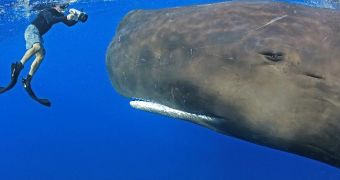A team of conservationists writing in the journal Marine Pollution Bulletin maintain that due consideration need be given to how plastic debris impacts on sperm whales.
The conservationists say that, following their performing an autopsy on a 33-feet-long (about 10 meters) sperm whale that was found dead on a beach in Granada, Spain, they discovered a total of 59 plastic items stuck inside the animal's belly.
The combined weight of these plastic items was one of 40 pounds (roughly 18.2 kilograms).
According to Mongabay, the conservationists speculate that the plastic debris kept the whale from feeding as often as it normally would have. This eventually translated into its starving and passing away.
The wildlife researchers who performed the autopsy on this whale have also pieced together an inventory of the marine pollution discovered in whales since 1903 until present day.
It appears that, as the greenhouse industry in the Mediterranean Basin continues to expand, increasing amounts of plastic pollution work their way into the waters off the Spanish-Mediterranean coast and in the Strait of Gibraltar.
Although it may very well be that the sperm whale inside whose body the conservationists discovered 40 pounds of plastic debris was no more and no less than a so-called anomaly, many fear that this was not the case.
“These animals feed in waters near an area completely flooded by the greenhouse industry, making them vulnerable to its waste products,” specialist Renaud de Stephanis and his fellow researchers reportedly wrote in their paper.
“Interestingly, most types of these plastic materials have been found in the individual examined, starting with two flowerpots. The main debris found in the animal was identified as the plastic cover material of greenhouses,” they further detailed.
Given the findings of this research, specialists urge that efforts to safeguard sperm whales also focus on the need to cut down on the amounts of plastic debris that ends up in their natural habitats one way or the other.
As Renaud de Stephanis and his team put it, “These debris issue should have a relevant section in the conservation plan of the species.”

 14 DAY TRIAL //
14 DAY TRIAL //